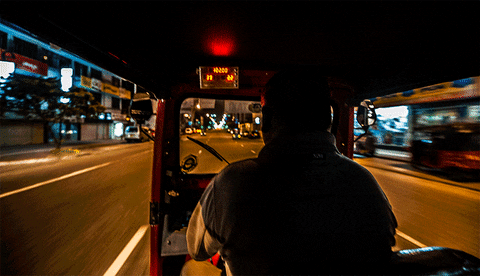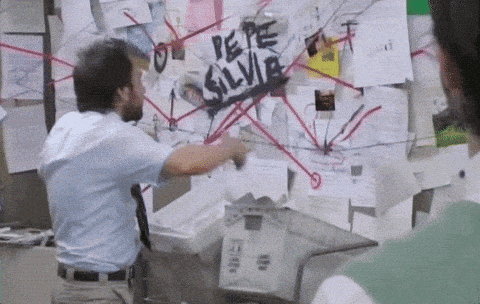- The Creator Lens
- Posts
- 📸 Why Kodak Died
📸 Why Kodak Died
Google is supercharging its video editing game with fresh AI tools in Google Photos that turn even the most complicated edits into a walk in the park. Plus, Kodak’s rise and fall offers a perfectly timed lesson in tech adaptability, while AI tools are stirring up fresh debates in the art world. Curious how these stories intertwine and what they could mean for your creative journey? Dive in with us...
In today's rundown
VISUAL CREATORS
For your artistic side.

The Story: Kodak is often blamed for failing to adapt to digital photography, leading to its decline. However, a deep dive reveals that the company was once a digital camera pioneer, dominating the market by 2005. Yet, its focus on point-and-shoot models made it vulnerable to the smartphone revolution, especially with the arrival of the iPhone, which ultimately spelled disaster for their sales and strategy.
The Details:
Kodak was initially a leader in digital cameras, being the top seller in the U.S. by 2005, thanks to its Easy Share range.
The company struggled with the shift to digital because advancing technology diminished the need for repeat customers, unlike with traditional film cameras.
Smartphones began to dominate by offering buyers a convenient all-in-one device, leading to Kodak's plummeting camera sales.
The film industry's decline was not just Kodak's downfall but reflected broader market shifts, which quickly left them behind their competitors.
Despite its challenges, Kodak still produces film today, catering to a growing niche market for analog photography, particularly among younger creatives interested in retro styles.

Why It Matters: Kodak's story is a cautionary tale for all creative professionals, especially those in photography and filmmaking. It underscores the importance of adaptability amidst rapid technological changes. Understanding why a once-iconic brand faltered in the face of innovation can inform current creators on how to pivot their strategies and embrace new tools—like smartphones or AI—while preserving their core identity. In an industry ever-evolving, remaining versatile is essential for survival and relevance.
PRODUCTION MASTERY
The commercial aspects of creativity.

The Story: A recent article by Chris Michaels in The Art Newspaper highlights the art world’s growing anxiety over AI’s influence on artists and institutions. Michaels suggests that fears surrounding AI's monetization by tech giants may be exaggerated and argues that artists already benefit from accessible AI tools, which could democratize artistic creation rather than threaten it.
The Details:
Michaels contends that concerns about AI ownership and monetization by tech companies have overshadowed ongoing technological advancements that aid artists.
Artists currently have consumer-level access to AI models like Midjourney, enabling them to create stunning visuals without prohibitive costs seen in traditional art production.
The author compares the monopolization of AI to historical disparities in access to artistic tools, asserting that traditional methods of creating art have long been costly, with the AI landscape providing new opportunities.
The article emphasizes that while the debate about ethical data usage in AI persists, many of the same concerns have been historically overlooked in other technology sectors impacting art and society.
Ultimately, Michaels posits that AI should not be viewed as an adversary; it offers a novel medium for creative expression and encourages artists to ask better questions about their role in this evolving landscape.
Why It Matters: The ongoing discourse around AI's role in the art world raises vital questions about artistic freedom and access to technology in a democratizing context. For creative professionals, understanding the landscape of AI tools is crucial, as these advancements can empower them to challenge traditional artistic norms and explore innovative ways to express their creativity. Embracing AI can potentially unlock new revenue streams while ensuring that artists maintain agency over their work within a competitive market landscape, prompting a valuable re-evaluation of how technology serves creativity.
TOGETHER WITH ROKU
Run CTV Ads on Roku This Q5
“Q5” is a key post-holiday shopping period
Reach shoppers where they’re streaming – on Roku
You can run self-serve CTV ads for just $500
CREATOR ECONOMY
Navigating the digital creative world.

The Story: Google is upping its video editing game with brand new AI-powered tools in the Google Photos app, designed to make the editing process smoother and more intuitive. Launched in a recent update, these features are set to streamline video projects, putting essential editing functions at users’ fingertips.
The Details:
The Google Photos app now features a revamped video editor interface, making key tools readily visible for seamless access.
An improved trim tool allows for precise video cuts with user-friendly controls, ensuring you can highlight only the best parts of your footage.
The new Auto Enhance option boosts colors and stabilizes shaky footage with just a single tap, transforming ordinary clips into something remarkable.
A dynamic Speed tool lets users adjust playback speed—speed things up or create dramatic slow-motion effects.
AI-powered video presets enable automatic trimming, lighting adjustments, and applying effects.
Why It Matters: These updates signal Google’s commitment to integrating AI into everyday workflows, providing creators with accessible tools to enhance their storytelling. This evolution in Google Photos could redefine how content is produced and shared, empowering even casual users to create professional-quality videos effortlessly.
📫 Sign up for The Creator Lens
🔥 Press Worthy

📽️ VISUAL CREATORS
Street photography legend Bruce Gilden warns he might be broke in a year, highlighting the financial struggles many photographers face. Known for his bold style, Gilden reflects on his illustrious career and the challenges of funding his passion, even as he approaches 80.
Apple asserts that photography should depict "something that really, actually happened," setting them apart in the generative AI landscape. While competitors like Google embrace creative edits, Apple's focus on authenticity may shape its future in an AI-driven world of visual storytelling.
📈 PRODUCTION MASTERY
AI copyright tool Tracer is flexing muscles by removing AI-generated Mario images from X, including one of Mario with a beer and cig. Nintendo’s not playing around with its IP, and posts once showcasing fan art are in the crosshairs, raising copyright concerns.
Gran Canaria Studios has unveiled one of Europe’s largest virtual production stages, spanning 1,200 square meters. Designed by industry giants like Arri and ROE Visual, it’s set to enhance the island's film industry, attracting high-caliber productions to its stunning locales.
🎭 CREATOR ECONOMY
Insta360 has launched two innovative AI-powered webcams, the Link 2 and Link 2C, designed to elevate video conferencing and live streaming. Both models boast 4K recording, advanced autofocus, and AI-enhanced audio tech, ensuring users present their best selves online.
TikTok is leveling up with new Subscription packages for non-LIVE creators, allowing them to offer exclusive perks to their top fans. With customizable tiers, creators can enhance community engagement and boost earnings, all while navigating the platform's evolving landscape.
📫 Sign up for The Creator Lens
📚 Learn & Grow

📽️ VISUAL CREATORS
The Truth About Social Media, Gear, and Agents in Photography
How AI Elevates Human Creativity: Beyond Execution to Innovation
📈 PRODUCTION MASTERY
This is why it’s still so hard to identify AI images
What's the Difference Between an Agent and a Manager?
🎭 CREATOR ECONOMY
Apple iPhone 16 Pro review: small camera update, big difference
Reply